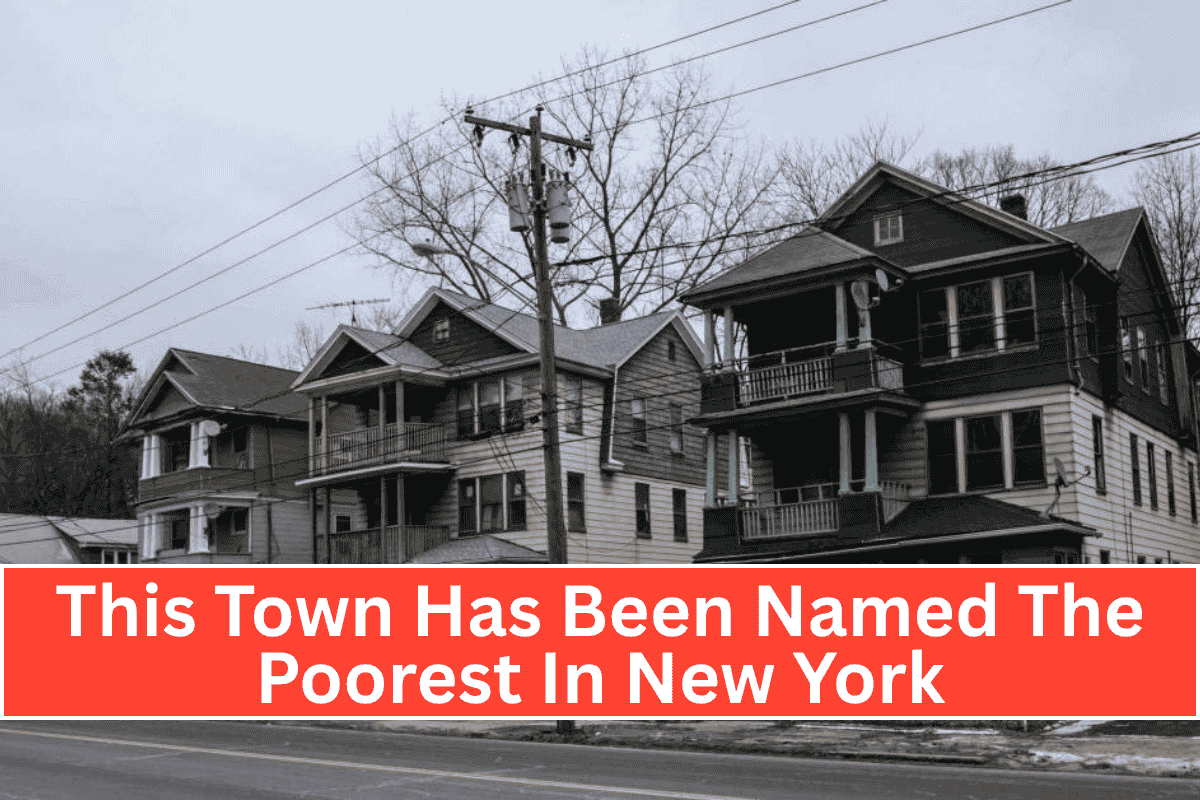New Square, a small village in Rockland County, New York, has been ranked as the poorest town in the state. This report came from an analysis by 24/7 Wall St., which was published in USA Today. The village is home to a Hasidic Jewish community that values religious life and tradition over modern education and income.
Although New Square is a close-knit and faith-driven community, many of its families live below the poverty line. Around 70% of its residents are considered poor, and the average household earns only about $21,773 a year.
That’s far below the New York state median income of $60,741. Even when compared to other similar communities like Kiryas Joel, New Square’s income is about $5,000 less.
Why So Many People in New Square Are Poor
There are many reasons why New Square faces high poverty. One main factor is the community’s religious lifestyle. In this village, religious studies take priority over careers or financial success.
Most boys focus almost entirely on studying the Torah—the central religious text in Judaism. This leaves little time or opportunity for learning subjects like English, math, or science.
Shulem Deen, a former resident of New Square, said that the lack of secular (non-religious) education is one of the biggest reasons for poverty in the village.
Boys and men spend years studying in yeshivas (Jewish schools), often continuing religious studies even after getting married. During this time, they earn only small stipends from religious schools called Kolels.
Education and Work in the Community
Because many boys don’t receive a full secular education, it becomes difficult for them to find high-paying jobs outside the community. Some men work as teachers, clerks, delivery drivers, or computer programmers. Most of these jobs are within the community itself, where education isn’t always required and employers may pay partly in cash.
Women in New Square often take on work while also raising large families. It’s not unusual for families in the village to have 10 or more children. The community values large families and religious learning, which leaves little room for focusing on financial growth.
Government Help and Social Services
Because of the low incomes and large families, many people in New Square rely on government programs to get by. These include Medicaid, food stamps (SNAP), and rent assistance. The local Department of Social Services helps people apply for these benefits, checking each case based on income and family size.
Even back in the 1970s, New Square was already known as one of the poorest places in New York. Reports from 1975 showed that about two-thirds of families were using food stamps and Medicaid at that time.
Different Views and Debates
Not everyone agrees on how to handle the poverty in New Square. Some activists, like Naftuli Moster, believe that private religious schools should be required to teach basic secular subjects. He says young boys and men in these communities are being denied the education they need to become independent.
However, some leaders in the Hasidic community believe that outside opinions don’t understand their way of life. They argue that religious learning and strong family values are more important than income.
There’s also concern that criticism of Hasidic communities can sometimes lead to hate speech or discrimination, which is something everyone agrees should be avoided.
New Square’s story highlights how culture, religion, and economics can all connect. The community is rich in faith and tradition but faces serious economic struggles. While many families rely on government help, their way of life is deeply rooted in religious beliefs and practices.
The ongoing debate about education and poverty in places like New Square is complex and emotional, but it continues to raise important questions about how to balance tradition with the need for practical life skills.
By understanding the unique lifestyle of this village, we can learn more about the different ways people live in America—and the challenges they face.












